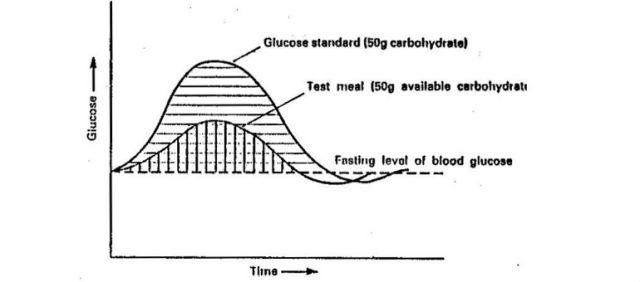
What's this
What is the glycemic index and how is it calculated
A simple but understandable definition of glycemic index could be the following: the glycemic index (GI) expresses the ability of carbohydrates contained in food to raise blood sugar.
However, this definition does not refer to the methods used to calculate the glycemic index of a given food. For this reason, a more elaborate definition is generally encountered in books dedicated to human nutrition:
the Glycemic Index of a given food is defined as the incremental area subtended by the glycemic curve, caused by the intake of a portion of 50 g of carbohydrates of the food, expressed as a percentage of the incremental area subtended by the glycemic curve, caused by the 'intake of 50 g of glucose by the same subject.
This apparently incomprehensible definition is actually more complete and correct than the previous one. To fully understand it, it is necessary to understand the experimental method used to calculate the glycemic index of a food.
An individual, or a sample of people, is measured fasting blood glucose. They are then asked to take 50 grams of glucose, and then assess their blood sugar at regular intervals.
The collection of this data allows you to plot in a graph the glycemic changes in relation to the passage of time. The value 100 is attributed to the area under this line, since glucose represents the reference food for evaluating the glycemic index of other foods.
Each individual is then given a certain amount of food, calculated in such a way as to make exactly 50 grams of available carbohydrates. In this way we put ourselves in the same conditions as the previous test and it is possible to make a correct comparison between the two foods.
Similarly to glucose, blood glucose values are then measured at regular intervals. After having reported the data in the usual graph, the evaluation of the relationship between the extension of the two areas will allow to calculate the glycemic index of the food.
Area under the glucose curve: 100 = Area under the food curve: GI food
from which: Glycemic index = (food area / glucose area) x 100
Glycemic index of some commonly used foods
Select Food
| Apricot All-Bran Pineapple Orange Banana Carrot Ice cream cone waffle Cherries Watermelon Croissants Cornflakes (Kellog's) Crackers Boiled Beans Fanta Boiled Soy Beans Pure Fructose Glucose Ice Cream Kellogg's Special K Kiwi Whole milk Low-fat milk Lentils Maltodextrin Maltone Maltone also Popone) Honey Muesli White bread Rye bread Baked potatoes Boiled common potatoes Sweet potatoes French fries Pears Canned pears Fresh peaches Canned peas Boiled peas Cheese pizza (from the country) Popcorn Arborio rice Sucrose and cane sugar Cooked Barilla spaghetti 10 minutes Pineapple juice Apple juice Grapefruit juice Grapes Low-fat fruit yoghurt White low-fat yoghurt Yogurt Pumpkin | |
| Glycemic Index Value: |


























